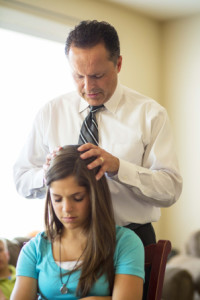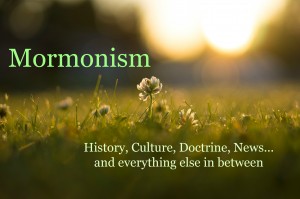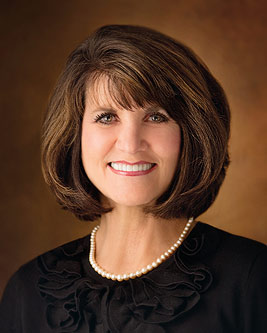In this series of articles, we have been discussing the Mormon priesthood, with the intention of helping people understand issues relating to women and the priesthood. Mormon is a nickname sometimes used to describe members of The Church of Jesus Christ of Latter-day Saints.
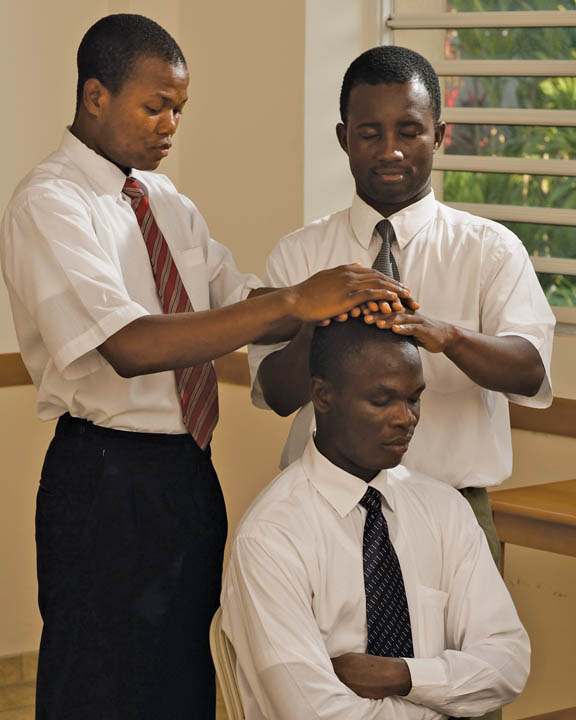 The priesthood, for Mormons, is very different from the priesthood of most religions. It is not a paid position and it is not a career opportunity. Nearly every boy or man who is age twelve or older holds the priesthood and they carry out the duties of the work while living typical lives consisting of school, work, hobbies, and family life. Holding the priesthood does not equal being a priest who oversees all aspects of a congregation.
The priesthood, for Mormons, is very different from the priesthood of most religions. It is not a paid position and it is not a career opportunity. Nearly every boy or man who is age twelve or older holds the priesthood and they carry out the duties of the work while living typical lives consisting of school, work, hobbies, and family life. Holding the priesthood does not equal being a priest who oversees all aspects of a congregation.
Each level of priesthood has specific duties and many of those duties are dependent on holding a specific calling (an unpaid church position). For instance, a bishop, who is the equivalent of a pastor, serves for an average of just five years and does so part-time and without pay. For this reason, duties, including ministering, preaching, and praying, are spread among all church members.
A twelve-year-old boy, receiving his first priesthood office, is essentially the equivalent of a Catholic alter boy. He carries trays of bread and water, which Mormons use instead of wine for communion, to the members of the congregation. He has other duties as well, although none are equal to the authority of a religious priest in most religions. Duties and responsibilities increase with age. The levels of priesthood are listed below with the usual ages they are held. Young men may not receive these offices at a younger age, but can receive them at a later age if they convert to Mormonism or become worthy to hold the priesthood at a later date. The links take you off-site to a church manual explaining the duties and blessings of each office. Offices commonly held by teenagers are part of the Aaronic Priesthood. Offices held by adults are part of the Melchizedek priesthood.
Duties of a Deacon (ages twelve to thirteen)
Duties of a Teacher (ages fourteen and fifteen—the title does not refer to teachers of classes, which usually don’t require one to hold the priesthood)
Duties of a priest (ages sixteen and seventeen)
Elders and High Priests (adults)
The Appropriate Use of the Priesthood
The priesthood, as practiced by Mormons, is a position of service. Those who hold the priesthood use it to serve other people, not to gain personal or temporal benefits for themselves. For instance, one responsibility a Melchizedek priesthood holder has is to heal the sick through special priesthood blessings. (Mormons are also taught to seek traditional medical care.) However, the priesthood holder cannot access this healing by himself. It requires two priesthood holders and even a man who holds this priesthood must find two other men to carry out the healing ordinance. This gives him no actual advantage over a woman in accessing the priesthood. Both must request the blessing from priesthood holders. The priesthood holder may use this authority to heal others, but not to heal himself.
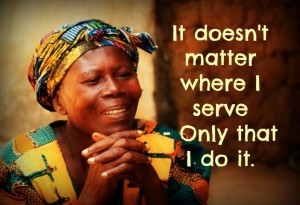 Priesthood holders use their authority to act in God’s name to assist anyone who needs the service. This means that a person who does not have a priesthood holder in the home, a priesthood holder who needs an ordinance for himself, or one who needs a second person to assist, can easily find a priesthood holder to carry out the ordinance. They most often call on home teachers. Each family is assigned two home teachers, and each male age fourteen or older serves as a home teacher. These home teachers visit a few families each month to deliver a brief spiritual message and to develop a true friendship with the family. They are the first, along with the visiting teachers who perform the same function for women, to be called on when a family needs service of any kind, including priesthood ordinances. Family members can also select another relative, male missionaries, or any other priesthood holder they choose to call on.
Priesthood holders use their authority to act in God’s name to assist anyone who needs the service. This means that a person who does not have a priesthood holder in the home, a priesthood holder who needs an ordinance for himself, or one who needs a second person to assist, can easily find a priesthood holder to carry out the ordinance. They most often call on home teachers. Each family is assigned two home teachers, and each male age fourteen or older serves as a home teacher. These home teachers visit a few families each month to deliver a brief spiritual message and to develop a true friendship with the family. They are the first, along with the visiting teachers who perform the same function for women, to be called on when a family needs service of any kind, including priesthood ordinances. Family members can also select another relative, male missionaries, or any other priesthood holder they choose to call on.
This is the reason few women really find it essential to hold the priesthood themselves. What matters is that we have access to the priesthood ordinances, not that we be the person who holds it. While it might be frustrating to a woman to need to call someone to give her a priesthood blessing, she would still have to do this if she had the priesthood herself. This is really no different than any other aspect of service. A person who needs dinner does not have to be the person who cooked it in order to eat. He or she just needs access to the meal the chef prepared. In the same way, we need to have access to the priesthood, but we don’t have to perform the ordinances. We only need to know someone who can.
Priesthood is Service
The ability to hold and use the priesthood is a sacred opportunity, but it is not the only sacred opportunity God has given us. There are many such opportunities and every person has the ability to perform many types of sacred services. When I am faced with an opportunity to serve that I can’t do, whether because of gender, age, location, time, talent, or even health or disability, I simply remind myself that it isn’t about me. In the end, what matters is that the Lord’s work be done. Any task the Lord assigns me, however small it might seem to the world, matters beyond measure to God and to His work. I want to serve where He sends me and I need to put all my energy into the callings I do have, rather than focusing on the callings I was not given.
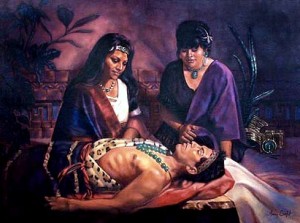 One of my favorite Book of Mormon stories involves a woman named Abish. The story in which she is featured is usually considered a story about Ammon, but in many ways, it is really her story because the most important part of it would not have happened without her courage and intervention. Her story illustrates the point I am making above.
One of my favorite Book of Mormon stories involves a woman named Abish. The story in which she is featured is usually considered a story about Ammon, but in many ways, it is really her story because the most important part of it would not have happened without her courage and intervention. Her story illustrates the point I am making above.
Abish was a servant in the king’s palace. Ammon, a prophet, had volunteered to work for the king as a caretaker of the animals. She was the only member of the church and circumstances forced her to keep her testimony of the gospel private. No one knew she was a convert.
Ammon saved the king’s sheep and this gave him the opportunity, at last, to share his gospel message with the king. The Holy Ghost was so strong during this sermon that the king fainted. Everyone but his wife thought he was dead and she appealed to Ammon, who agreed the king was not dead and would arise the next day. The queen gained a testimony of the gospel and she also fainted from the power of the Holy Ghost’s presence in the room, as did Ammon himself.
Abish, who shared Ammon’s faith, however, stayed awake. She had witnessed Ammon’s promise and knew the moment the king “returned to life” could be a powerful missionary tool. She bravely went out into the kingdom to summon people to the palace to witness it.
At first, things didn’t go very well. The people who gathered thought there was a curse on the king and started calling Ammon horrible names. This caused Abish to cry, thinking she had made a terrible mistake. However, the queen regained consciousness when Abish took her hand and she began to pray to God. She awakened her husband and he began to preach the gospel to the crowd Abish had assembled. Although some people left in anger, others stayed and these people were converted and baptized. Abish was finally permitted to live her faith in the open.
Now, Ammon was the priesthood holder and the missionary. It was he who initially agreed to be a shepherd, who saved the sheep, and who offered the first missionary lesson. However, it was Abish who made the conversion of so many people in the kingdom possible. In reality, it was the two followers of Christ, one priesthood holder and one woman of faith, working together, who made this amazing conversion story possible.
In the Bible, we learn that when Jesus went to the home of Jairus to heal his daughter, who was presumed dead, he made all the scoffers and doubters leave the house. Only He, a few of His apostles, and Jairus and Jairus’ wife were in the room when the child was healed. The lesson manual used by teachers of young children explains what happened in this way:
“Why was Jesus able to heal Jairus’s daughter? (He had the priesthood; the girl’s parents had faith)” (Primary 2: Choose the Right, Lesson 16, Jesus Christ Has the Power to Heal).
This note caught my attention this year when I taught the lesson. When I taught it to the children, I had them hold up one hand and say, “Jesus had the priesthood.” They held up the other hand and said, “The parents had faith.” They then brought their hands together and said, “And Jairus’ daughter stood up.” (I then let them stand.) I explained that the priesthood of Jesus and the faith of the parents worked together to save the child.
This story illustrates the powerful relationship between the priesthood and those who hold it. A mother watching her husband and another priesthood holder offering a healing blessing can feel pride in her husband’s commitment to be worthy to carry out such a critical ordinance. At the same time, she is not merely a passive bystander. Her role in the ordinance is to bring her faith and prayers to the moment, just as Jairus’ parents did. They may not have had the priesthood, but their faith was an important contributor to the healing of their daughter. Even Jesus relied on that faith to complete the ordinance. How much more does a Mormon man rely on the faith of his wife or any other person observing the ordinance?
All Mormons have access to the priesthood. In fact, even people who are not Mormon have access to some of the ordinances. While the ability to hold the priesthood is a valuable and sacred opportunity to serve God, every opportunity to serve God is valuable and sacred. My goal is to think more about God and less about myself. It does not matter where I serve—only that I do.
About Terrie Lynn Bittner
The late Terrie Lynn Bittner—beloved wife, mother, grandmother, and friend—was the author of two homeschooling books and numerous articles, including several that appeared in Latter-day Saint magazines. She became a member of the Church at the age of 17 and began sharing her faith online in 1992.

